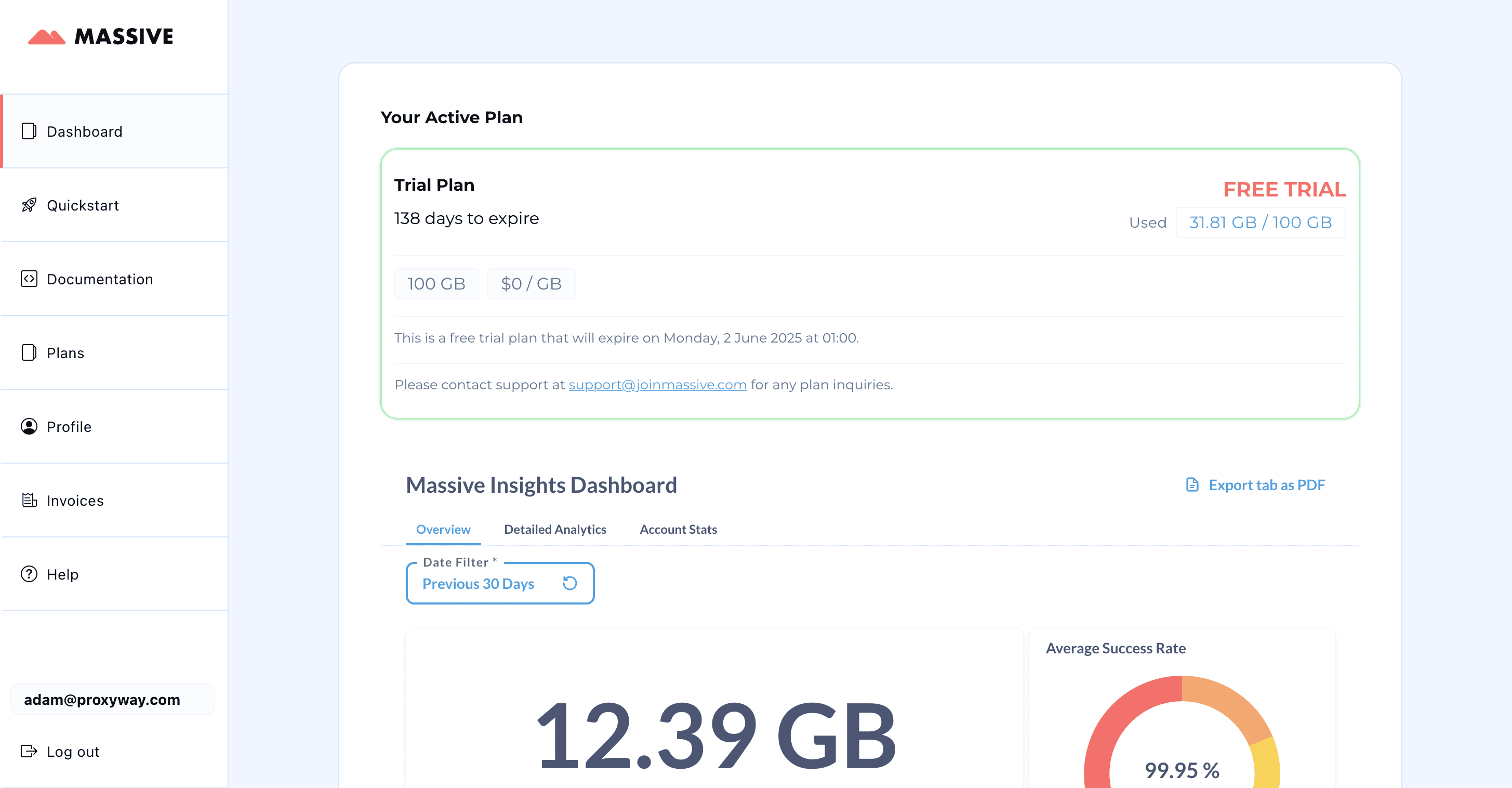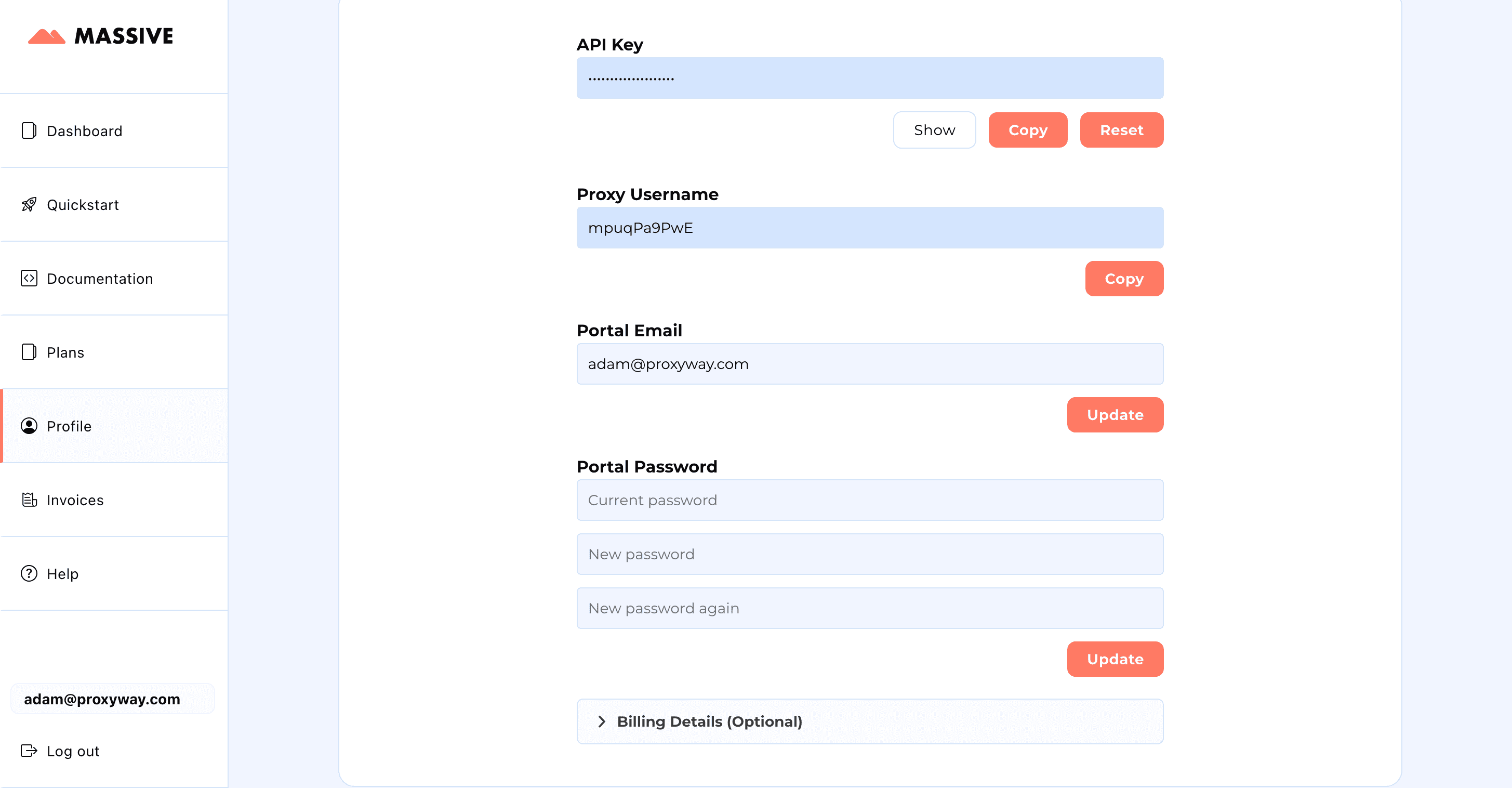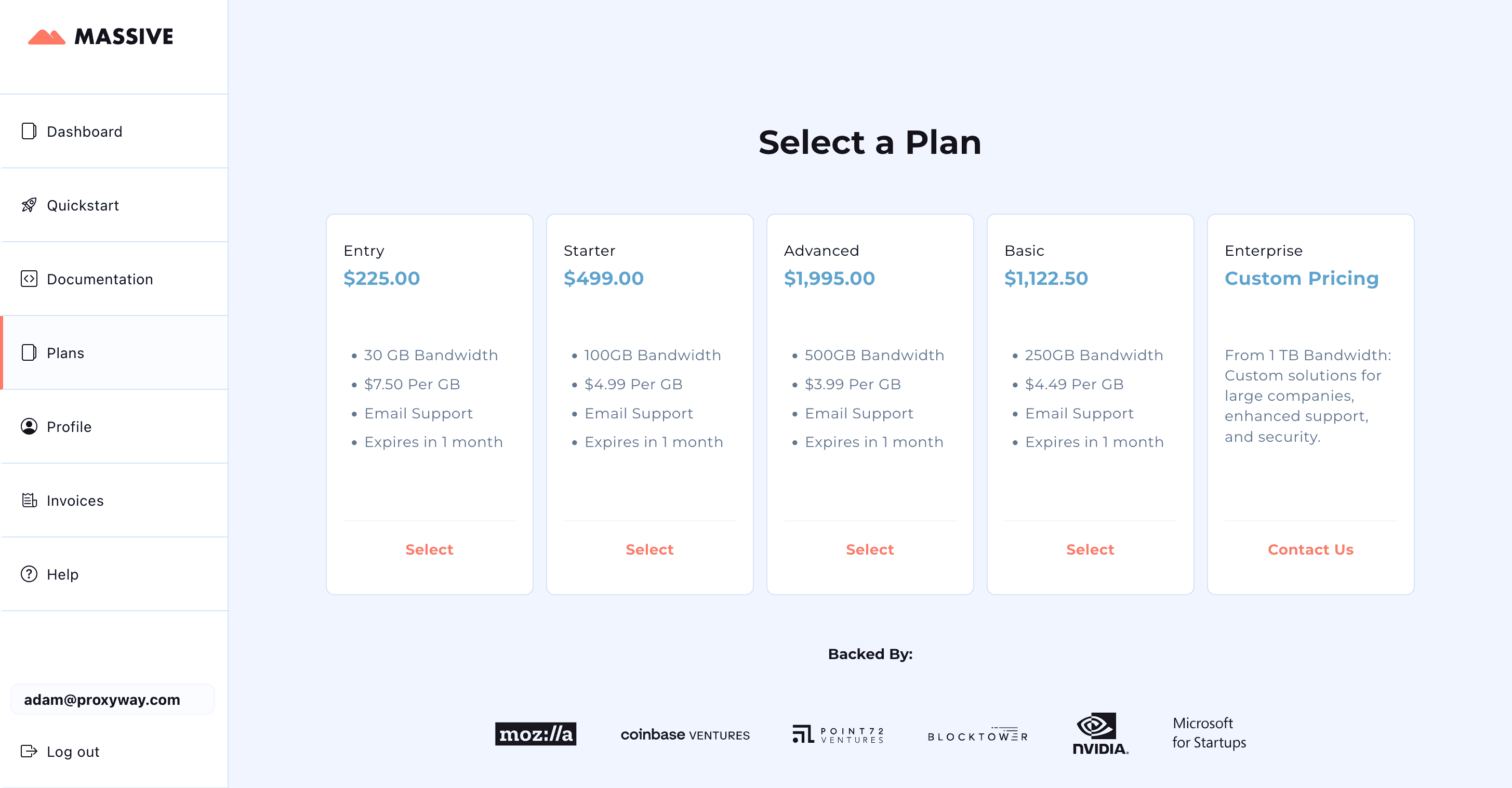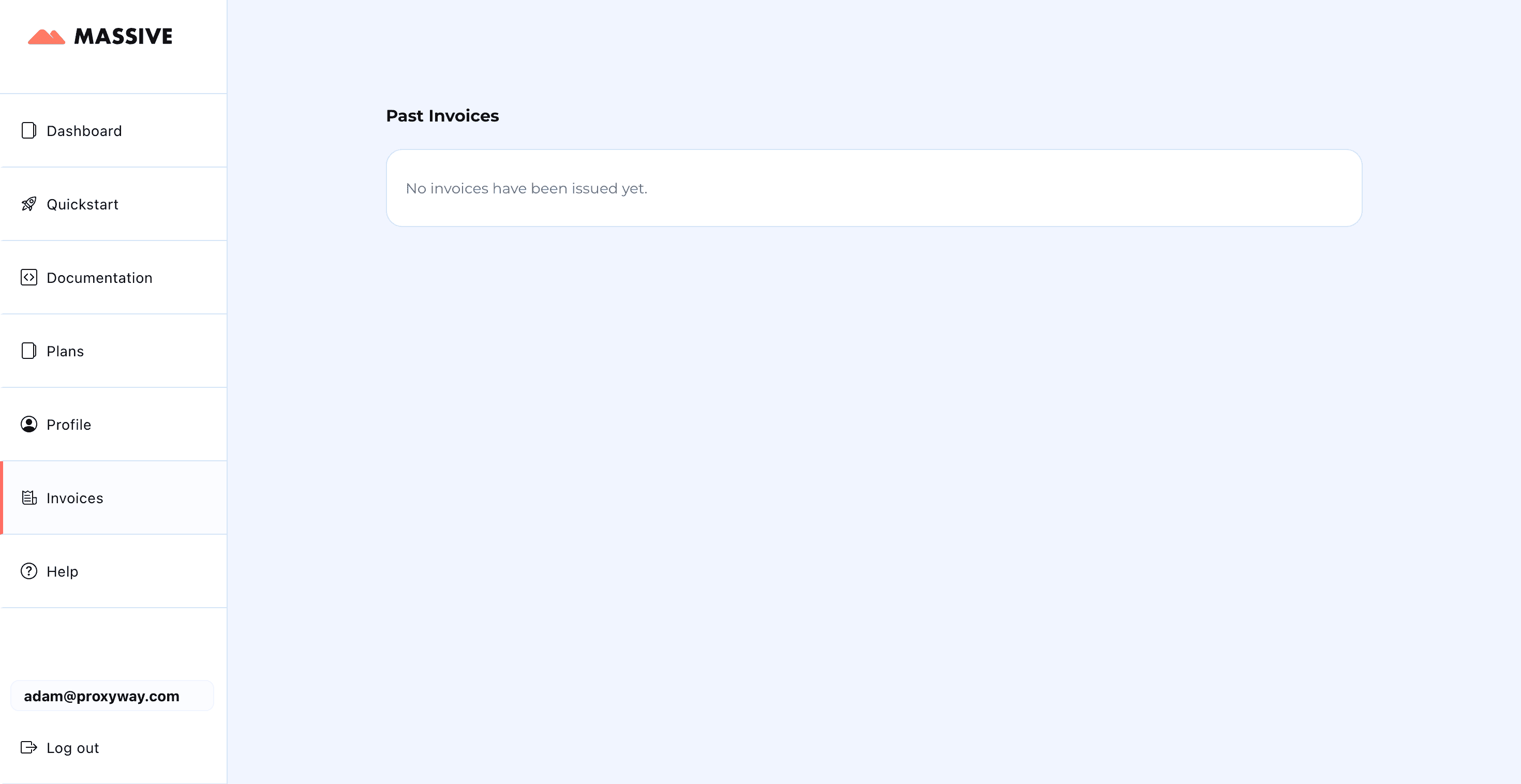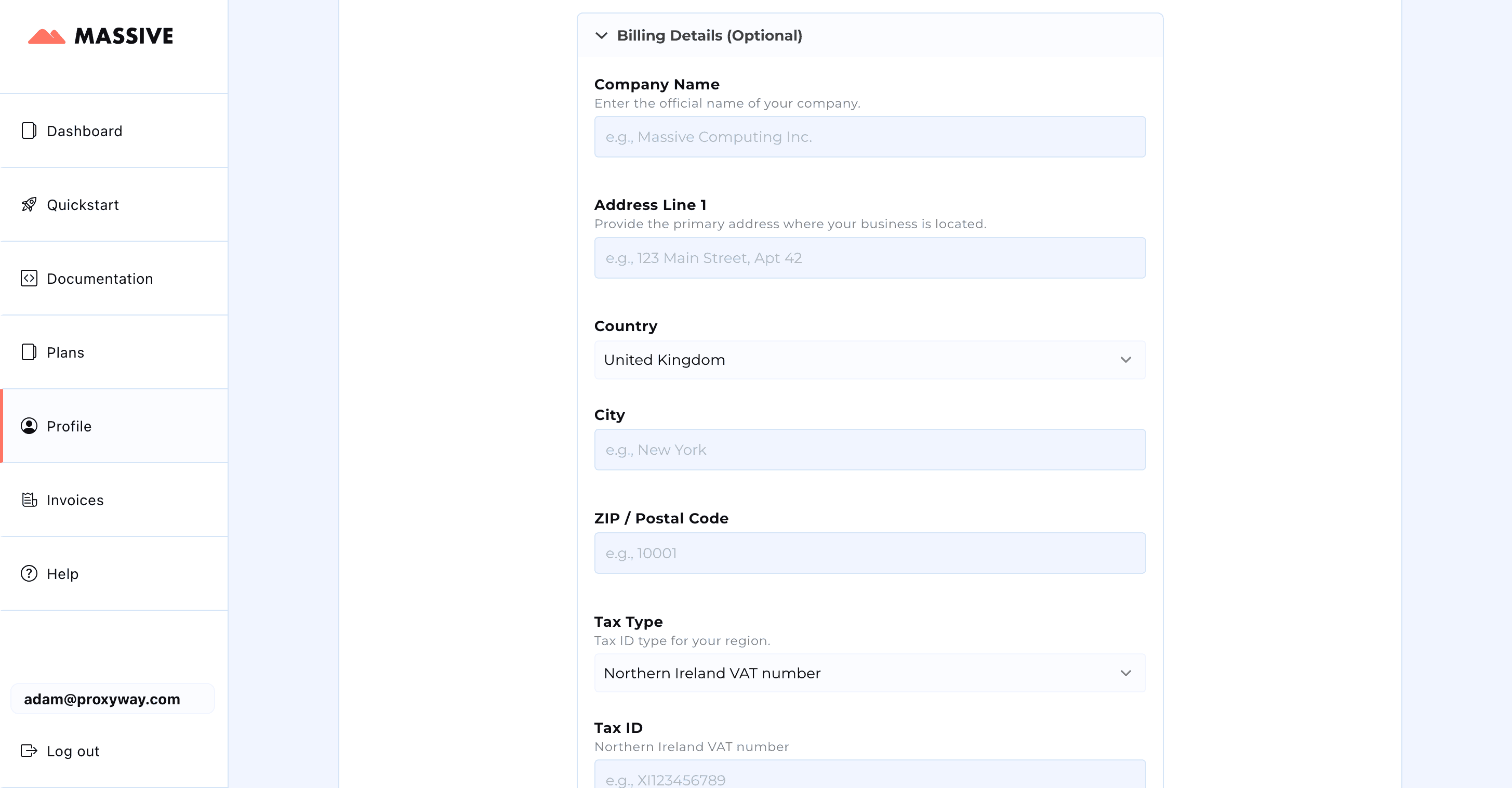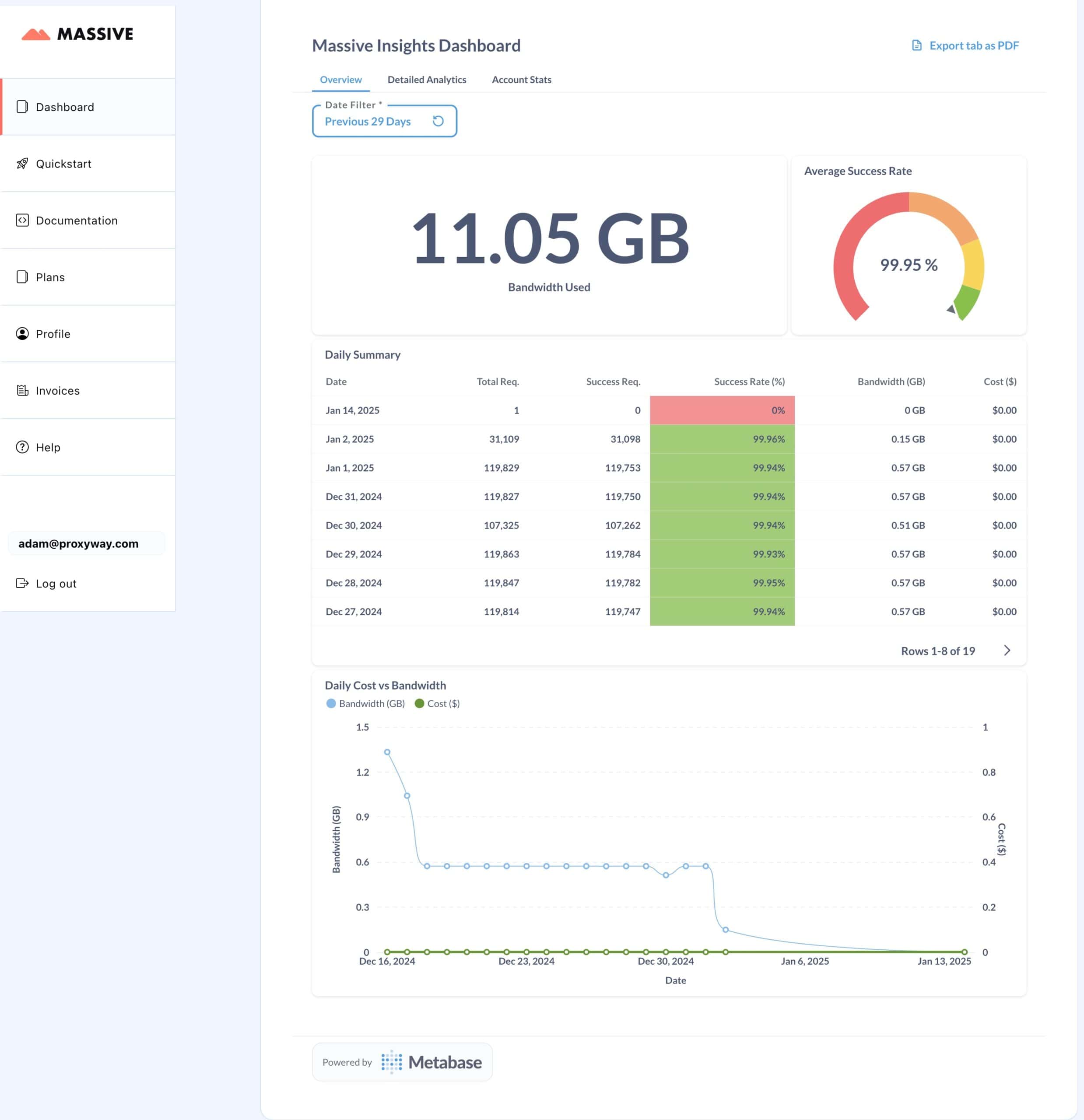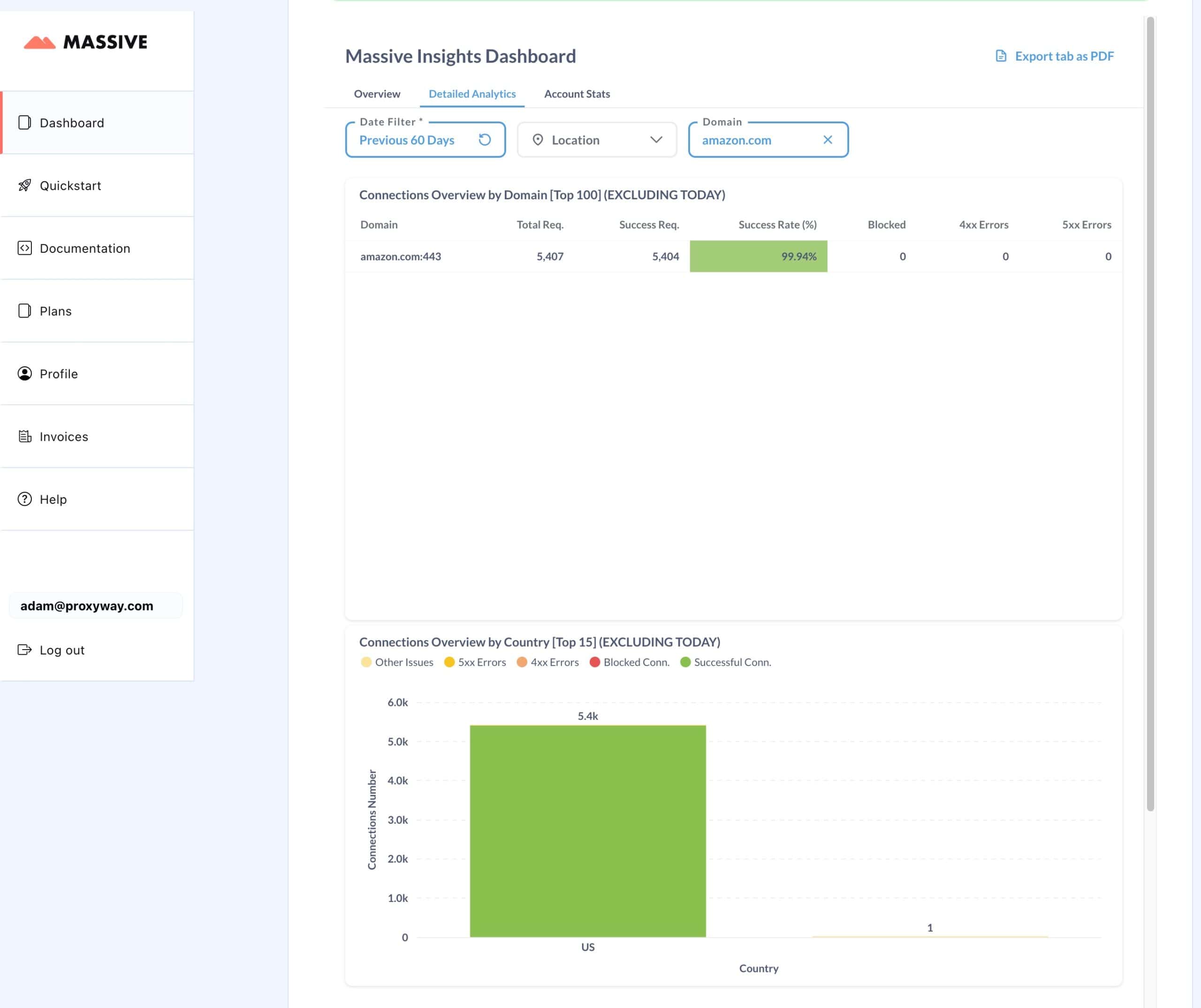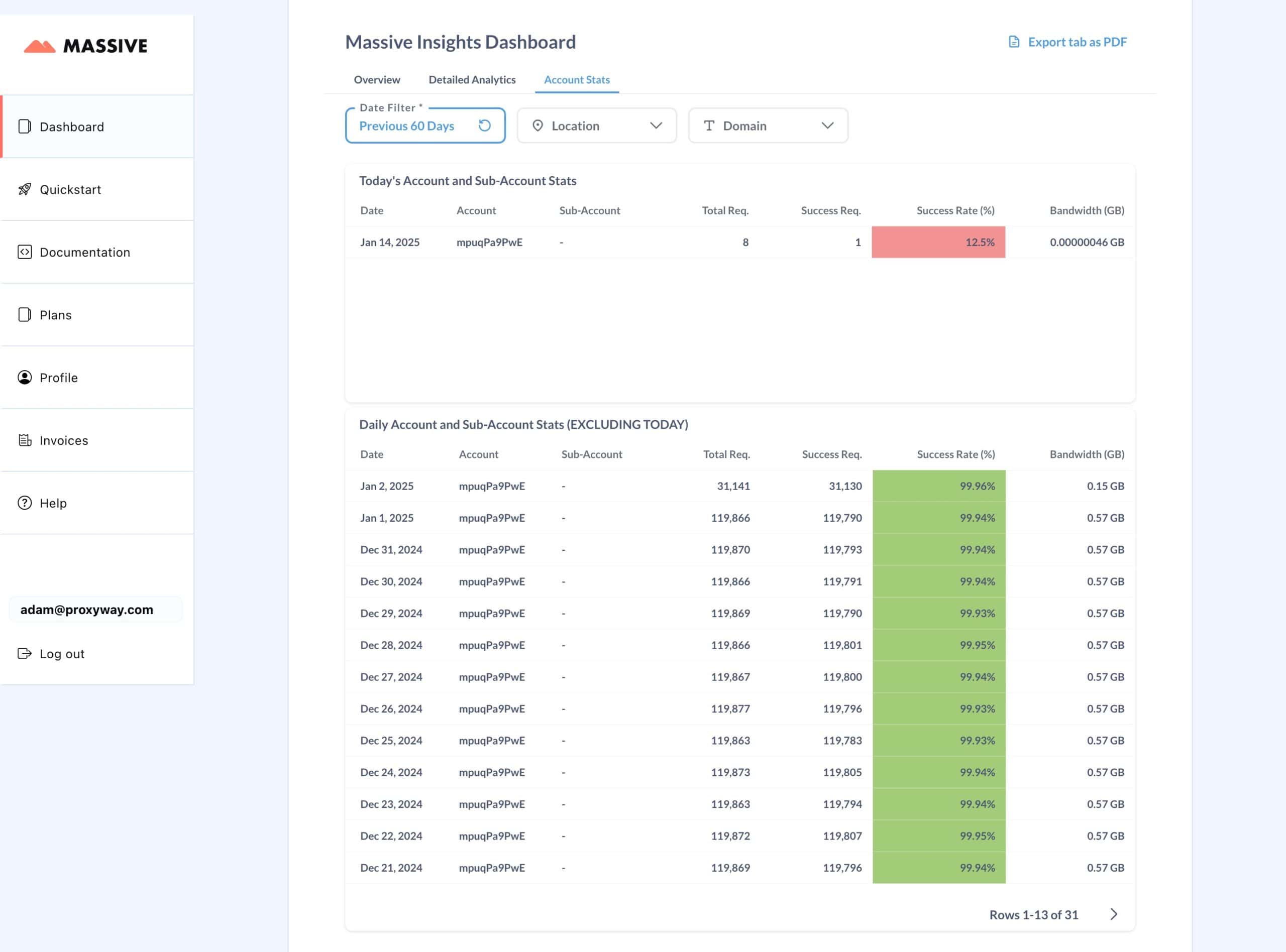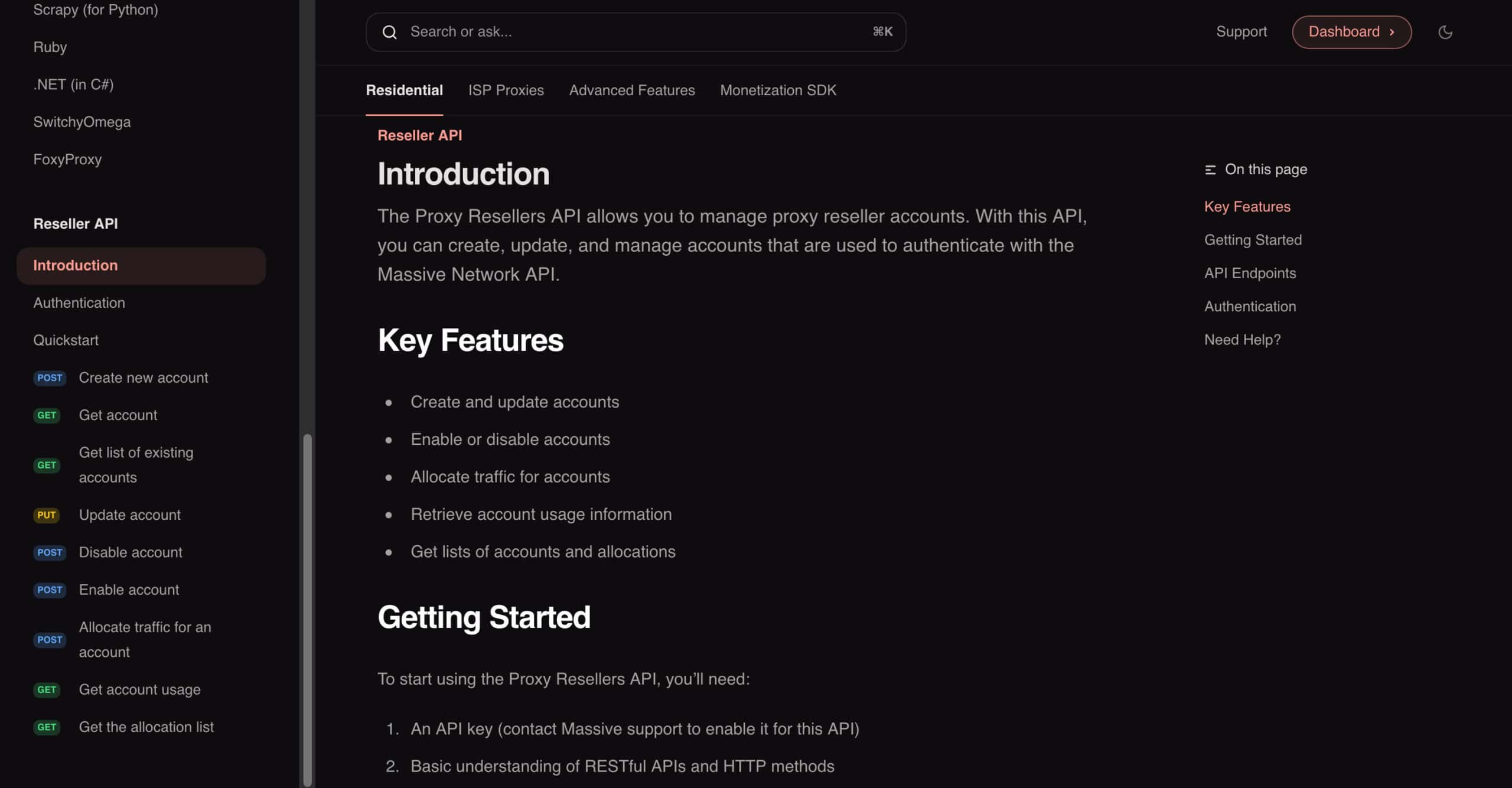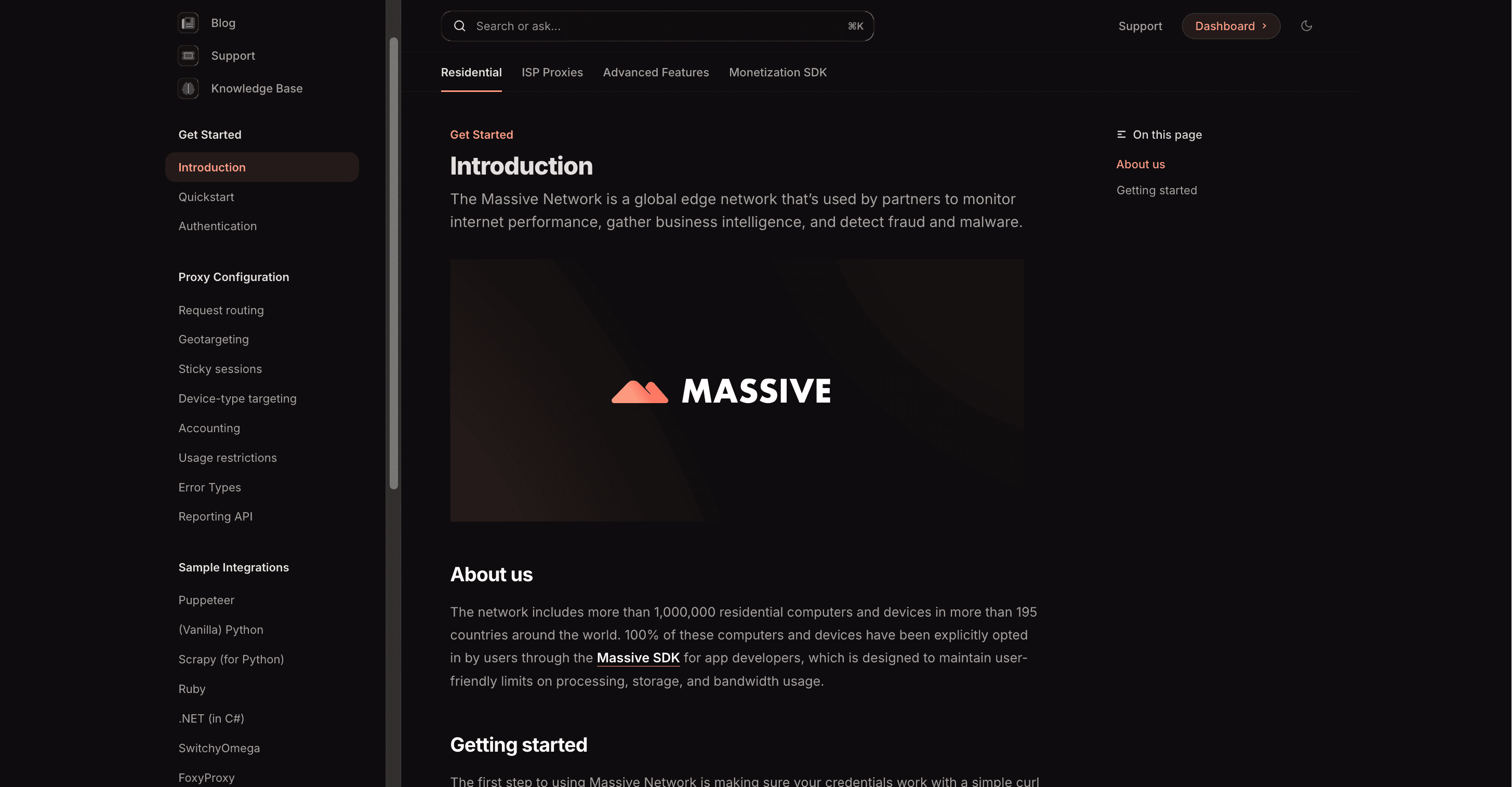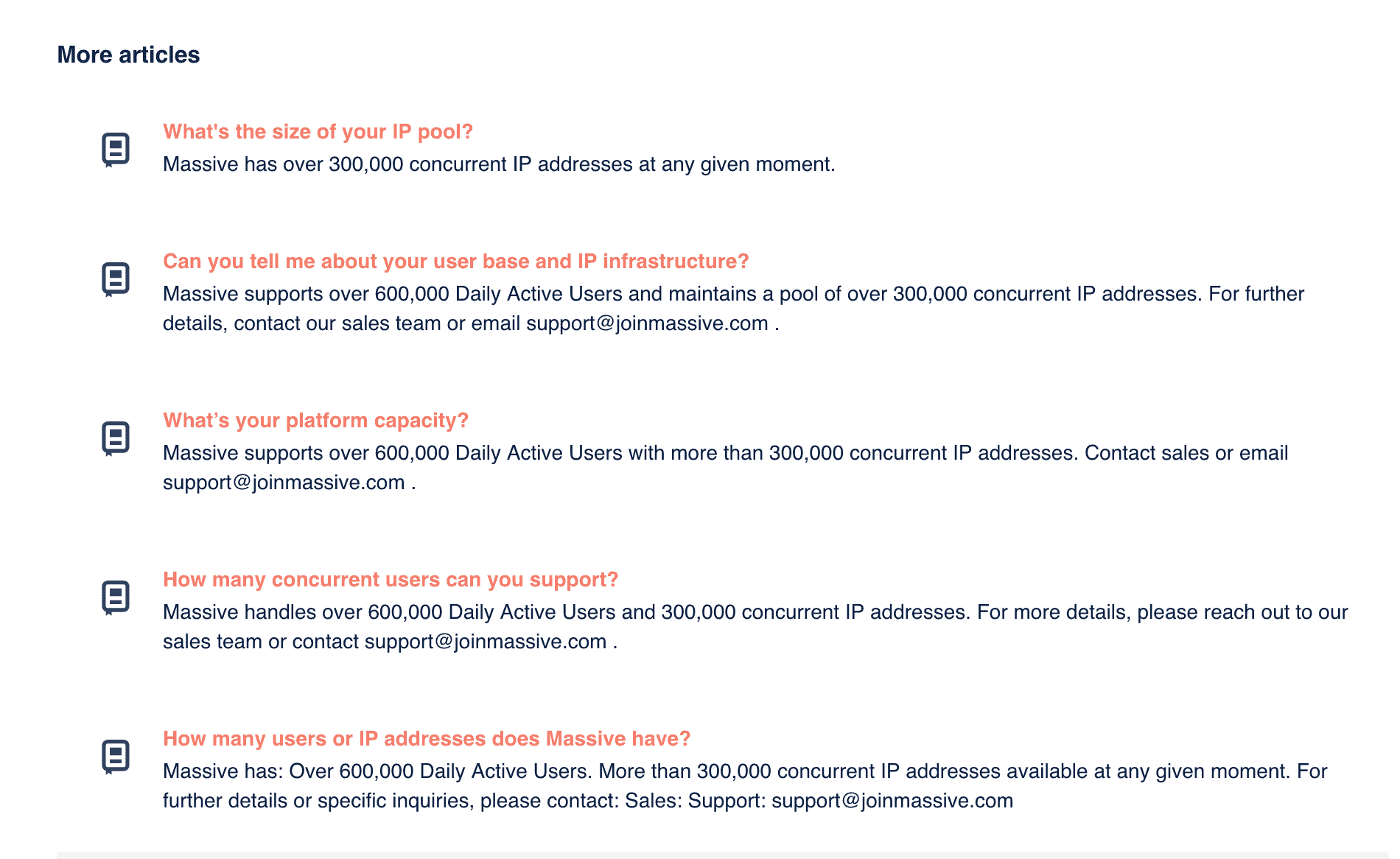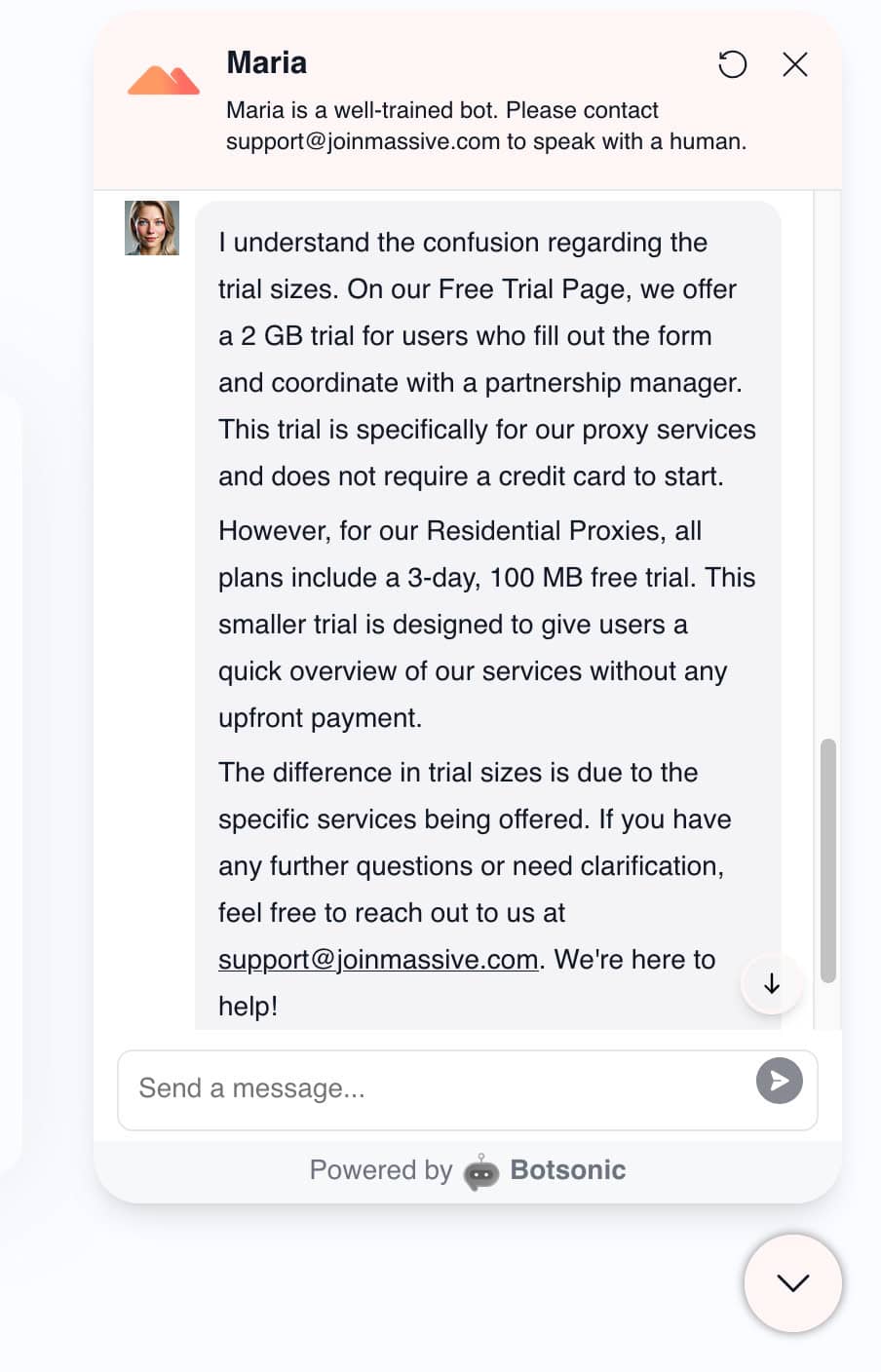Massive Review
Massive covers the basics well, has many residential IPs in the US and Europe, and a robust infrastructure to keep things running.
Massive isn’t a new company by any means, but it only seriously entered the proxy server market in 2024. US-based, well financed, and ambitious, the provider tries to prove that these are the residential proxies you should choose for your project.
Is the service any good? And more importantly – is it better than what you can get for a comparable price, given how tough the competition currently is? Let’s find out!
General Information
- Country: US
- Founded: 2018
- Employees (LinkedIn): 25-50
- Proxy networks: Residential, ISP
- Supporting tools: ❌
- Price range: Mid-market
- Starting price: $4
- Payment methods: Credit card, US bank account, Cash App (Stripe)
- Trial: Available
Massive is a US company founded in 2018 by Jason Grad and Brian Kennish. Its main aim was – and still remains – to build a computer resource sharing platform. To that end, Massive has raised over $12M in venture capital, mostly in late 2021.
The platform’s uses have changed over the years: it was primarily used for crypto mining during the hype, and now the focus is on downloading small amounts of data from the web – in other words, proxying traffic.
The vehicle for this is Massive’s SDK, which developers can add to their software as a monetization method. It’s a standard way to source residential IPs, but Massive stands out by being very upfront about what it does. There’s even a (bit dated) article on TechCrunch covering the business model.
In other words, Massive could be considered one of the more transparent residential proxy providers, at least as far as IP sourcing SDKs go. That said, the FAQ page still lacks any example apps despite promising them over a year ago. There’s always room for improvement, we suppose.
Massive started truly productizing its proxy network in mid-2024. In that sense, the provider is still new to the market. This is evident when looking at the website, which mashes together the proxy service, SDK, and even crypto mining, leading to an experience that’s not always coherent.
For the time being, it seems like Massive will focus on establishing itself as a web data infrastructure provider. Besides the main product – residential proxy network – the company is also testing the waters with ISP proxies, and there are traces of a search engine API in the documentation.
Currently, Massive’s weakest side is probably marketing. But if it perseveres, the company has the building blocks to become a force in the industry.
News about Massive
-
By Adam Dubois
-
By Adam Dubois
- Conferences
-
 By
Dominic Li
By
Dominic Li
- Opinion Pieces
Massive Proxy Networks
Massive currently offers two proxy server products:
- Residential proxies from most countries around the world.
- ISP proxies in the form of dedicated list. They’re available only in the US.
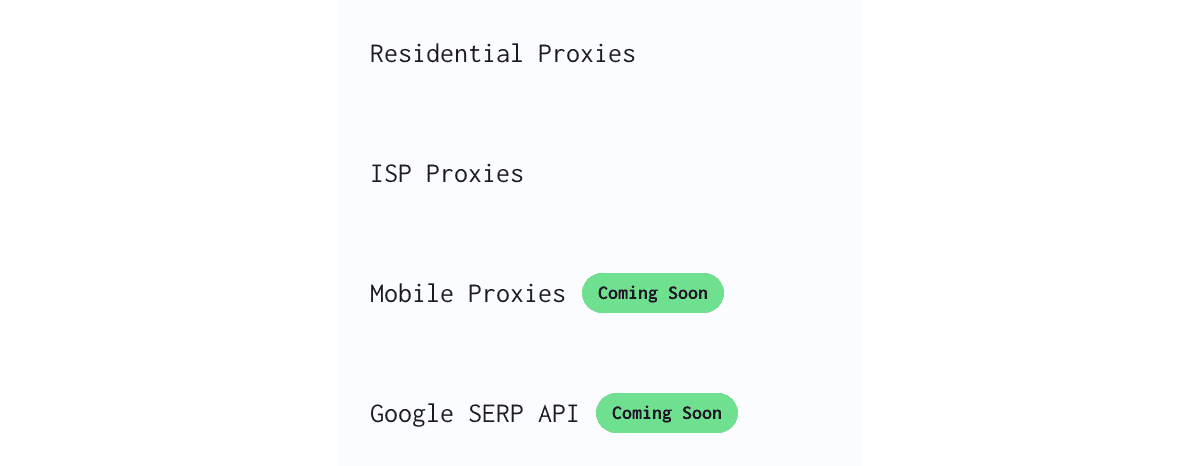
We cover individual proxy types in the expandable drop-downs below:
Residential
Residential proxies are Massive’s main product. Their network includes IPs from computers, phones, and WiFi-connected devices like smart TVs.
Pool Size & Coverage
- Advertised pool size: 1 million
- Locations: 195+ countries
- Targeting options: Random, country, state, city, ZIP code, device
Massive is modest in advertising its proxy network, which may lead to misleading conclusions if you take marketing claims at face value. For example, SOAX boasts 155 million residential proxies, or 155 times more.
If you dig through Massive’s documentation, you’ll find much more useful numbers: 600k daily active and 300k concurrent IPs. This translates to way more than a million proxies per month.
The network covers most countries around the world. You get precise filtering options, including ASN filtering. What’s more, the provider allows targeting specific devices: computers and laptops, phones, and even TVs. This feature isn’t something we encounter often.
Our benchmark (April 2025)
| Gateway | Requests | Unique IPs | Residential %* |
| Global | 1.2M over 21 days | 606,536 | 97.84% |
| US | 560k over 14 days | 222,513 | 99.02% |
| UK | 560k over 14 days | 162,579 | 99.17% |
| EU | 1.2M over 14 days | 324,678 | 98.84% |
| Brazil | 560k over 14 days | 132,408 | 96.21% |
| India | 560k over 14 days | 93,738 | 98.35% |
| Australia | 140k over 7 days | 16,154 | 99.13% |
* IP2Location database, Usage type data point (ISP, ISP/MOB, MOB IPs)
Comparison with other providers
Our benchmarks reveal that Massive has one of the smaller proxy networks. It includes many IPs in desirable locations like the US and Europe, and relatively few in India.
We found it interesting that the global pool had few to no proxies in Japan, China, or Korea, but we didn’t check the individual endpoints to verify if the same applied to them.
The pool was indeed residential, with very few IPs belonging to other usage types (such as commercial, educational institutions, or data centers).
Features
- Connection method: Gateway address
- Rotation: Every request, 1-60 mins
- Protocols: HTTP, HTTPS, SOCKS5
- Concurrency: Unlimited threads & ports
- Traffic: Plan based
- Authentication: Credentials
You access Massive’s residential proxies through a backconnect gateway server. It automatically chooses the best path to the proxy.
The proxies rotate with every connection request by default. A sticky session maintains the same IP for up to 15 minutes, or you can specify any interval between 1 and 60 minutes. An IP changes once a request fails (or if you reach the request limit for that node), but Massive has a parameter to override this behavior.
You can connect to Massive using HTTP, HTTPS if your company imposes strict security requirements, or SOCKS5. The latter option only accepts TCP traffic for now. As such, all ports other than 80 and 443 are blocked.
Integration Examples
- Basic request: USERNAME:[email protected]:65534
- Using filters: USERNAME-country-US-subdivision-CA-city-San%20Francisco-device-common:[email protected]:65534
- Using sessions: USERNAME-session-ID-sessionttl-TIME:PASSWORD
@network.joinmassive.com:65534
Massive always uses the same gateway address and, in most scenarios, port. The latter changes only when you switch to a different connection protocol like HTTPS or SOCKS5.
You can filter the pool or establish sessions by appending parameters to the username. According to Massive, the parameters can come in any order. A new session is represented by a different ID, which you can freely assign to it.
Pricing Plans
- Model: PAYG, Subscription
- Format: Traffic
- Modifiers: –
- Starting price: $112.50 for 30 GB ($3.75/GB)
- Trial: 100 MB or 2 GB for 3 days, 3-day refund
Massive charges for traffic only. Paying as you go used to be an option, but it was removed. Unused traffic carries over to the next month.
The provider has two trial options; the better one requires talking to a partnership manager (or a data nerd in Massive’s parlance).
How do the rates fare against other providers? Pound for pound, Massive comes out cheaper than most premium proxy vendors and rather compares with mid-market options like Decodo or IPRoyal. However, the entry price isn’t cheap.
Performance Benchmarks
Infrastructure performance
Requests: Same as the pool test (140k to 1.2M per gateway)
Target: Nearest server of a global CDN (~6 KB response size)
| Gateway | Our server location | Avg. success rate | Avg. response time |
| Global | DE | 99.66% | 0.92 s |
| US | US | 99.87% | 0.67 s |
| UK | DE | 99.58% | 0.59 s |
| EU | DE | 99.62% | 0.59 s |
| Brazil | US | 99.84% | 1.05 s |
| India | SG | 99.67% | 1.07 s |
| Australia | SG | 98.58% | 1.06 s |
Comparison with other providers
We’d be hard pressed to say anything negative about Massive’s residential proxy infrastructure. We were able to establish a connection the majority of the time, and the proxies responded quickly. Massive actually had the best success rate in the US out of all our tested providers so far.
Response time with a 2 MB page
Requests: 15,000 with the Global gateway, 5,000 with the US gateway
Target: Nearest server of a global CDN
| Gateway | Our server location | Avg. response time |
| Global | DE | 3.02 s |
| US | US | 2.04 s |
Comparison with other providers

Massive’s residential proxies were also among the fastest options for opening larger pages. They beat some alternatives by up to two times.
Performance with popular targets
Requests: ~2,600 per target
Location: US (both the gateway and our server)
| Avg. success rate | Avg. response time | |
| Amazon | 93.85% | 3.68 s |
| 88.29% | 4.56 s | |
| 96.29% | 3.97 s | |
| Total | 92.81% | 4.07 s |
Comparison with other providers
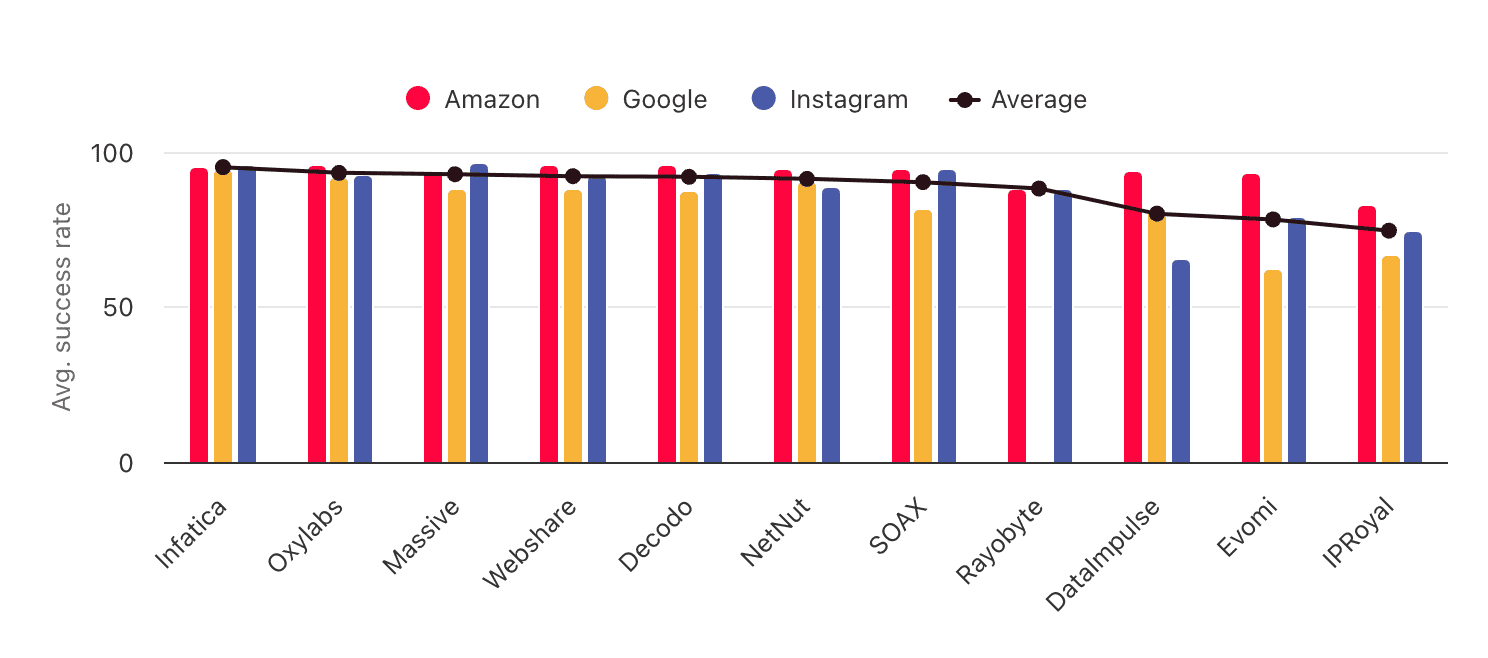
Our selection of real-world targets also failed to pose a big challenge. Overall, Massive showed strong results in all of our tests.
ISP (Static Residential)
Massive’s stock of ISP proxies includes 20,000 US IPs associated with AT&T. This isn’t enough for large-scale use but, as we’ll see, the proxies work very well.
Pool Size & Coverage
- Pool size: Based on purchased IPs
- Locations (June 2025): US East Coast
- Targeting: Country level
Massive’s ISP proxies are located in East Coast US, around Ashburn. This gives them the advantage of being close to major data centers. Other than that, the provider’s location coverage is anaemic compared to most competitors.
Features
- Connection method: Gateway address
- Rotation: Every request/static
- Protocols: HTTP, HTTPS, SOCKS5
- Traffic: Unlimited
- Concurrency: Unlimited
- Authentication: Credentials
Massive puts a gateway server between your computer and the proxy. This enables IP rotation on the provider’s end, which is optional and occurs with every connection request if enabled.
The service is more or less unlimited. However, it lacks UDP support and can’t be used in setups that require IP whitelisting.
Pricing Plans
- Model: Subscription
- Format: Per pay IP
- Modifiers: ❌
- Starting price: $30 for 10 IPs ($3/IP)
- Trial: ❌
Like most similar services, Massive has monthly subscription plans. You need to buy at least 10 IPs, and the largest public plan ends at 100. This once again proves that the service isn’t meant for large-scale use yet.
Looking at Massive’s rates, they’re actually highly competitive and scale well (up to $1.8/IP) within the limited pricing range.
Performance Benchmarks
We last tested Massive’s 100 US ISP proxies in April 2025.
Basic analysis
| /24 subnets | Location (MaxMind) | Location (IP2Location) | ASNs |
| 1 | US (100%) | US (100%) | AT&T (100%) |
Massive’s ISP proxies were associated with a major ASN, which is a big plus. However, they all came from one subnet. This is preferable if you’re controlling the full subnet (256 IPs); otherwise, we consider it a negative.
IP quality
Residential percentage: IP2Location database, Usage type data point (ISP, ISP/MOB, MOB IPs)
| Residential % | Matching ASN & organization |
| 0% | 0% |
The owner of the IP addresses was a hosting company, which reflected in IP2Location’s data. Ideally, ISP proxies should be recognized as residential, but not all websites care about this data point.
Infrastructure performance
Requests: 70,000 over 7 days
Target: Nearest server of a global CDN (~6 KB page size)
Our server location: US
| Avg. success rate | Avg. response time |
| 100% | 0.09 s |
Massive’s infrastructure performed amazingly well. Our testing server, proxies, and target were all located in Ashburn, which led to an impressive response time.
Download speed
Target: Hetzner’s 100 MB Ashburn benchmark
Proxies tested: 10
| Avg. without proxies | Average | Median | Slowest IP |
| 52.93 MB/s | 47.93 MB/s | 46.25 MB/s | 17.30 MB/s |
Furthermore, the ISP proxies had wide pipes. Over 40 MB/s is enough for all kinds of content, including large file downloads and 4K video streaming.
Performance with popular targets
Requests: ~2,600 per target
Location: US (both the gateway and our server)
| Avg. success rate | Avg. response time | |
| Amazon | 98.03% | 2.85 s |
| 100% | 2.13 s | |
| Total | 99.02% | 2.49 s |
Comparison with other providers
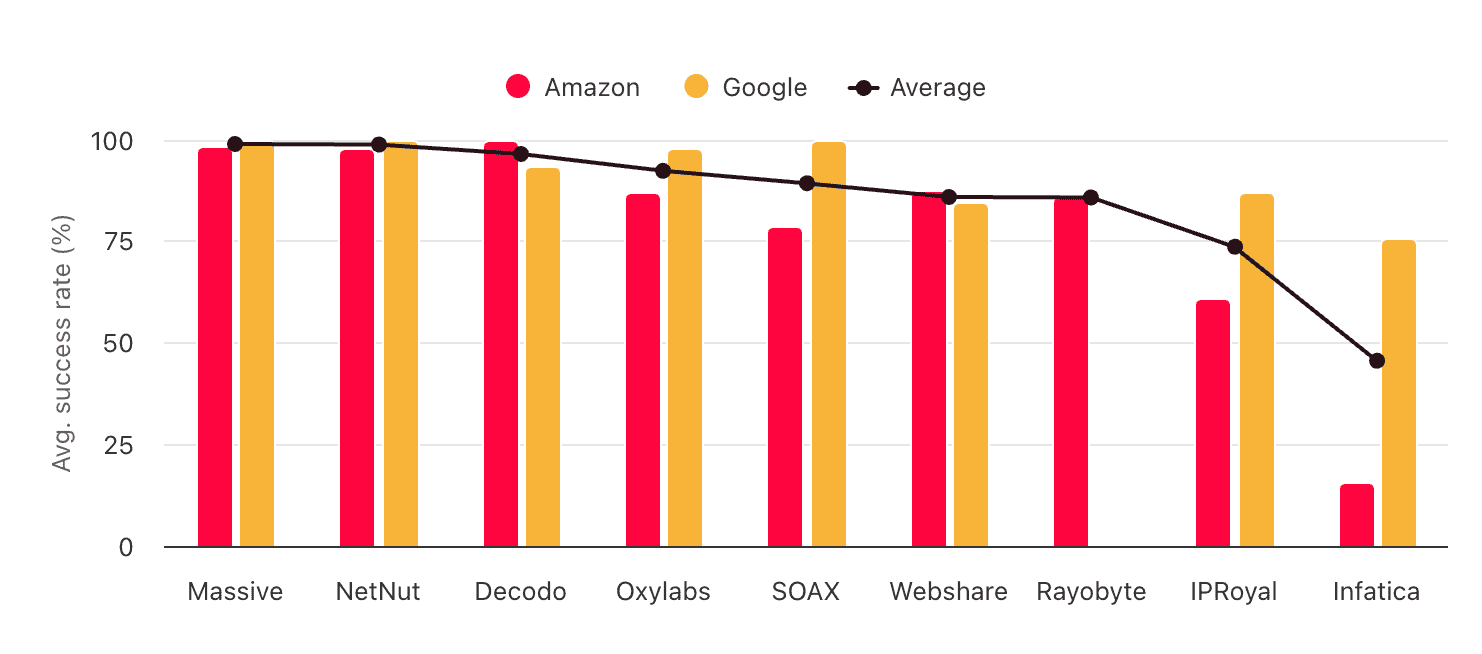
Massive’s ISP proxies finished strong in our real-world tests. Their success rate was flawless, and requests completed in no time.
How to Use Massive
Registration
The registration procedure is simple but also deceptively intimidating. Why? The first step involves choosing a subscription plan. This may put off some users, even if they notice the colorful heading stating that a trial is available with no upfront cost.
But once you get past this step, all you’ll need to do is enter a full name, email address, and password. After an email confirmation, Massive will let you into the dashboard and automatically activate the 100 MB trial.
What’s strange is that Massive doesn’t insist on entering payment details or even locking you into the chosen plan during the trial period. Sure, the dashboard will show a box asking to complete the purchase. But once you click on it, you’ll be able to choose from any of Massive’s plans. Why bother, then?
KYC & Usage Policies
As far as we know, no KYC process is required. However, the provider maintains a large list of restricted domains that’s not available publicly. Enabling any of the targets in the list will require identity verification.
It’s interesting that Massive also blocks any content it deems “not family friendly”. There’s no list or even examples given. We tried opening Pornhub (for science, of course) and, lo and behold – the provider’s custom Disallowed Content error appeared.
Dashboard
Massive has a dashboard for managing subscriptions, interacting with its products, tracking usage, and getting help.
The dashboard is simple and easy to understand. Each product receives its own tab with individual management options.
The simplicity is great, but it also misses some important features. For one, the only available display language is English. In addition, there’s no two-factor authentication, which has become an industry standard by now, and no way to share access with other users.
The subscription management tools here are spread throughout several pages. The dashboard’s main page shows how much time a plan has remaining. The Profile page lets you add billing details. And the Invoices page does exactly what its name suggests.
Massive’s dashboard lacks wallet functionality, so any update to the subscription will require a separate transaction.
The provider offers a proxy setup widget. It lets you choose the connection protocol, rotation type, location filters, and proxy device. It then generates a cURL code snippet.
Massive creates the proxy username and password automatically. You can generate (not enter) a new password in the Profile page, while the username can’t be modified. We’re also not sure how sub-users work in the current dashboard setup. And, we’d love to see code examples for more languages.
That aside, the widget is straightforward and convenient to use.
Massive’s dashboard provides detailed usage statistics powered by Metabase. You get a number of data points to work with, such as requests made, success rate, traffic spent, and associated costs.
The Detailed Analysis tab allows segmenting the data by location and/or domain and adds further data points, namely error codes. The third view, Account Stats, shows all of the above segmented by sub-user.
You can freely choose a time frame, whether it’s last minute, week, or quarter. The caveat is that the current day is always taken as the point of reference (previous week, 30 days, etc.) All the views can be exported in multiple formats, including CSV & JSON.
The country data takes forever to load, but overall, Massive has done a great job with usage tracking. If there’s anything missing, that would be the network status.
API Access
Massive offers a management API for resellers. To get a token, you’ll need to contact support. The API’s functionality includes creating and updating accounts, allocating traffic, and receiving usage information.
In addition, Massive has a reporting API available to all users. It’s somewhat convoluted, as you basically have to interact wit a third party (Metabase), with its own credentials and conventions. Still, this is much better than no API access at all.
Documentation
Massive has a documentation hub that covers the ins and outs of the residential proxy network: geo-targeting, sessions, and so on. It also includes a quickstart guide and several integration instructions with popular web scraping libraries.
In addition, the documentation links to a knowledge base, which is supposed to answer billing-related and other general queries. In reality, it was probably made for Massive’s AI chatbot (which we’ll cover in a sec).
Hands-On Support
So, how is Massive’s support? There are three ways to get help: through a chatbot, email, or the ticketing system.
The chatbot is mostly what you’d expect it to be. Maria is able to answer a range of questions, so long as the data is available in its knowledge base. So for example, we were able to learn about the size of the proxy pool or how to contact human support.
However, Maria wasn’t able to tell us the support’s working hours, how to integrate the proxies with Multilogin, or what the pool size in Morocco is. On the bright side, the knowledge base can always be expanded, and Maria didn’t try to hallucinate its way through topics it wasn’t trained on.
The ticketing system was designed for bug reports and getting access to blocked domains. It asks what went wrong and which software you used. When we tried this avenue, a response came in around an hour during daytime in Europe. The answer was curt but helpful.
Email, then, is for everything else. Or maybe nothing: after a day of waiting for a reply, we just shrugged and moved on. Massive told us there had been a bug in their email configuration and that they usually reply (significantly faster).
Conclusion
Massive has a lot to work with: a decently large – and self-sourced – residential proxy pool, strong infrastructure performance, and competent management tools.
At the same time, some aspects of the service are still underdeveloped, and the provider loses out in terms of variety compared to the market leaders.
Overall, Massive is a good choice for residential proxies, with the potential to become great.
Massive Alternatives

SOAX offers similar features and rates. You lose out on device targeting but get to filter by ASN, and there are more proxy types to choose from.

Decodo is the provider to beat in the mid-market segment where Massive currently stands. It has a significantly bigger pool and more flexible prices.

Dataimpulse can be a good option if you find Massive too expensive – the provider also sources proxies in-house and offers similar functionality.
Recommended for:
Businesses looking for a competent residential proxy network.
